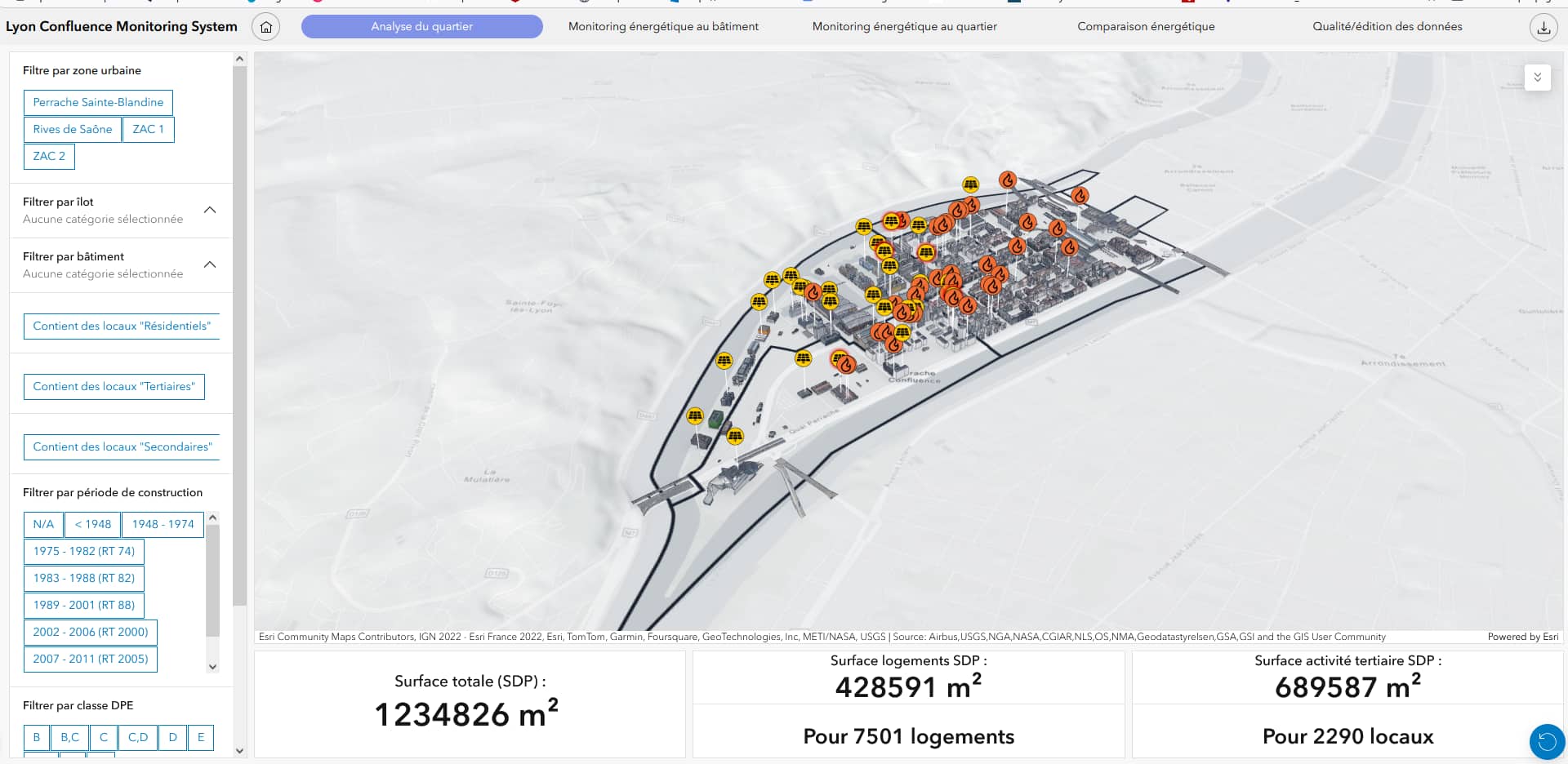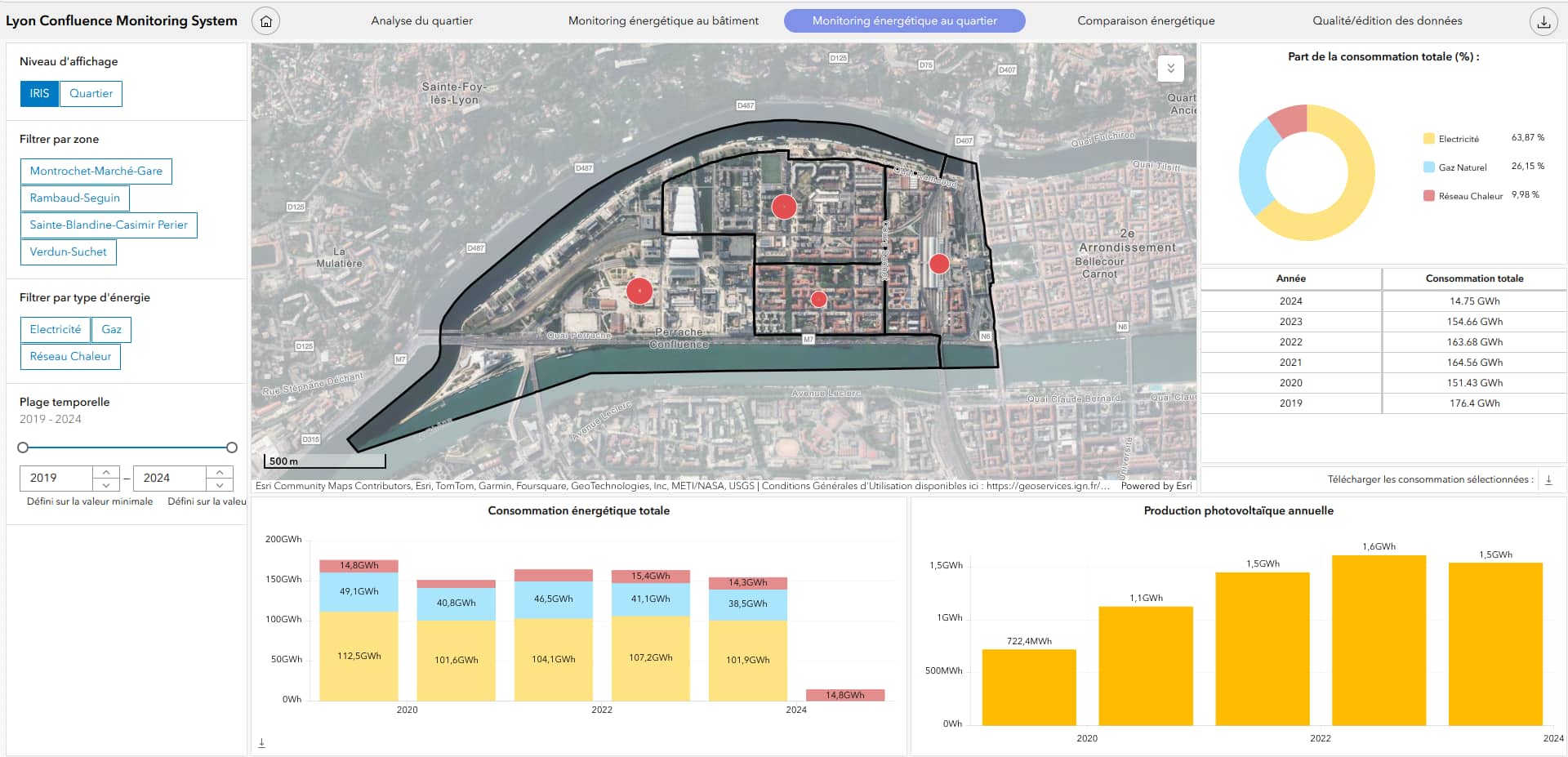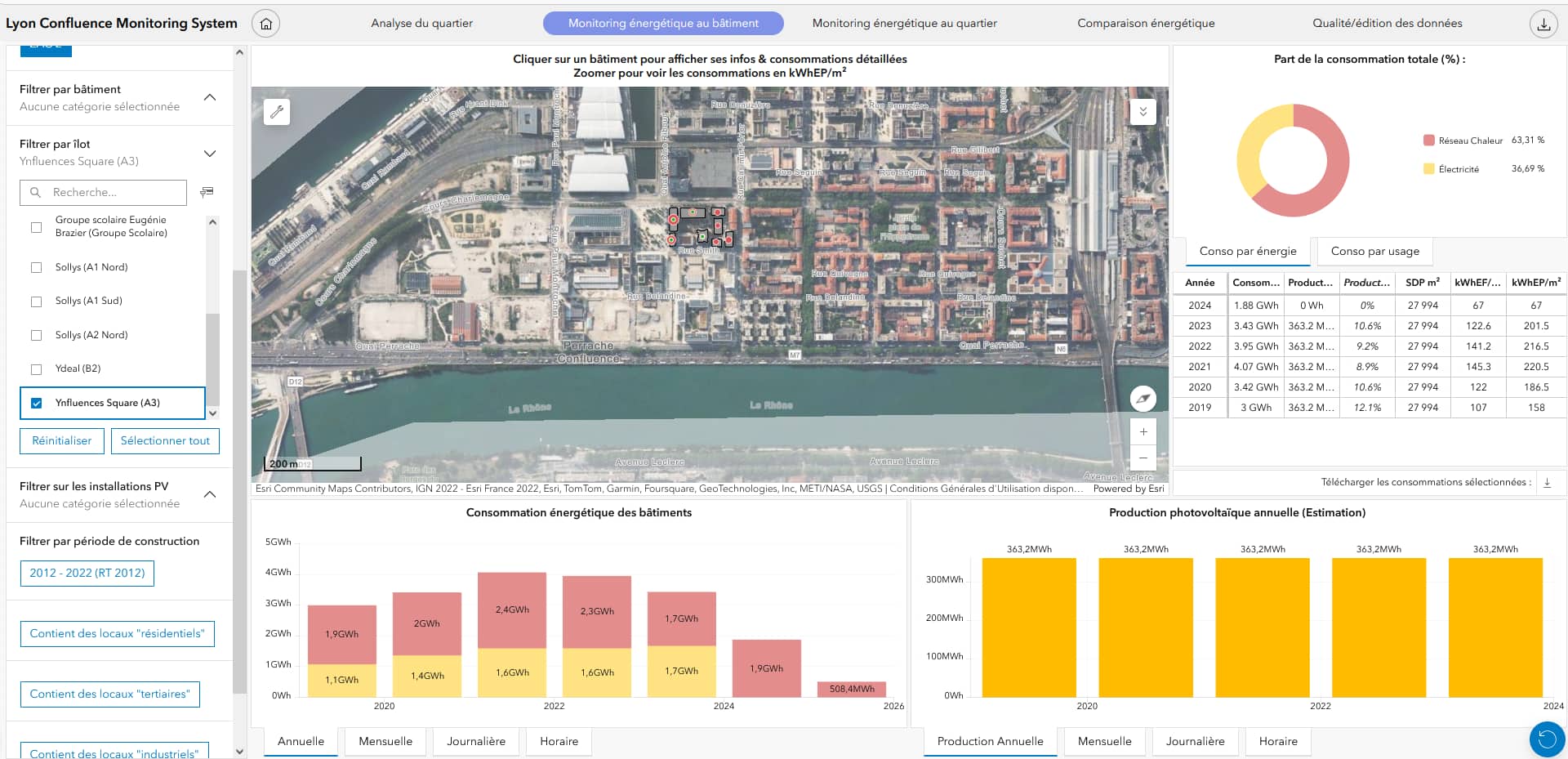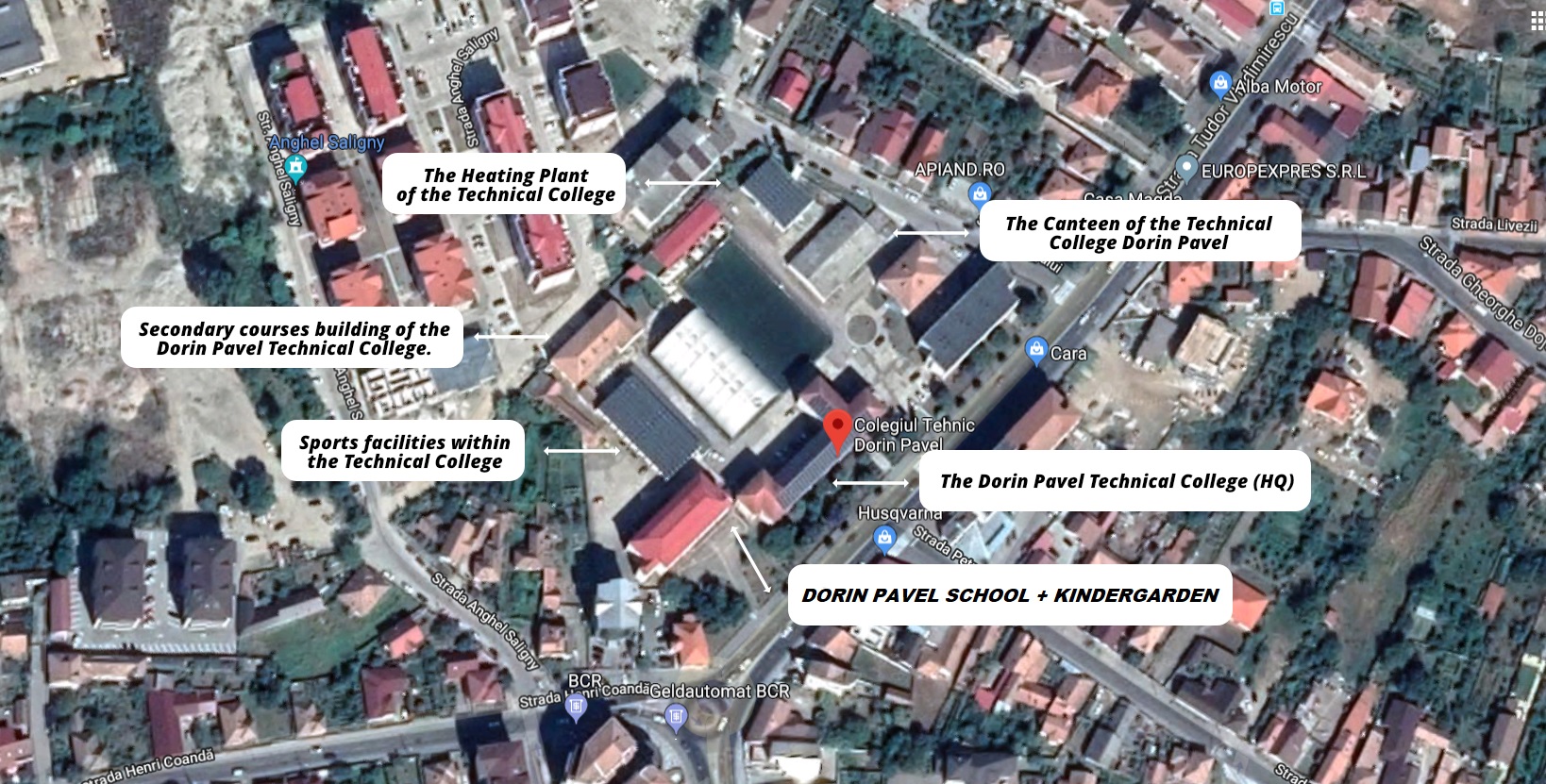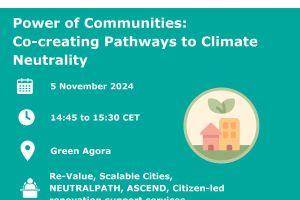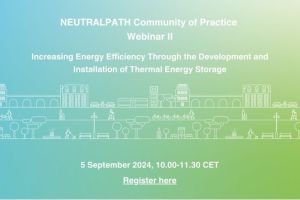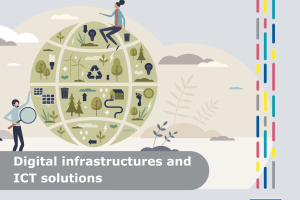
With Solution Package 1, ASCEND cities will employ advanced digital tools, such as digital twins, to design and replicate PCEDs, as well as create a digital infrastructure and interface for energy communities. ASCEND will also develop a digital monitoring KPI engine to optimise energy flow within the PCED and automatically run indicator calculations in support of assessment and planning.
- Design of the PCED with digital tools
- Use of District Energy Management Systems
- Digital monitoring KPI engine
- Digital infrastructure, for energy communities
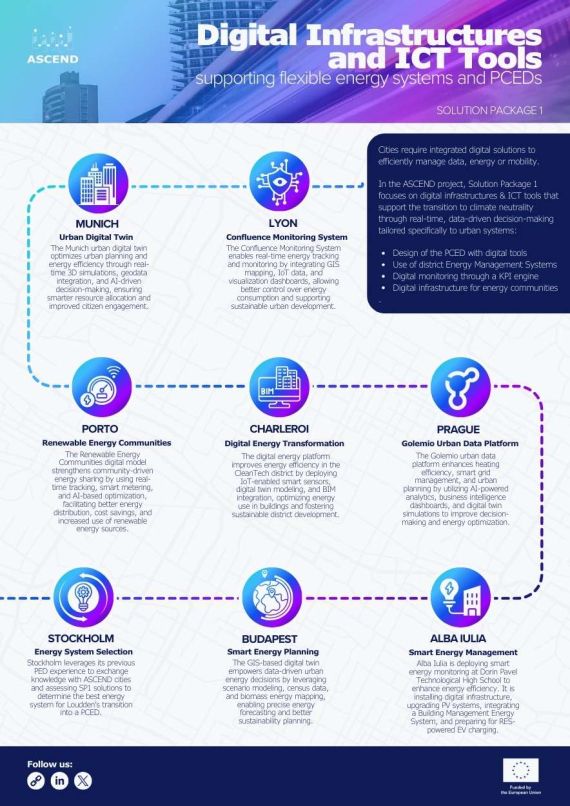
Digital infrastructures and ICT Tools in ASCEND cities
If you want to read more about the developments in SP1,
you can find below what ASCEND cities are implementing when it comes to digital infrastructure and ICT tools.
Lyon is driving data-driven urban sustainability through SP1 – Digital Infrastructure & ICT Tools, with the CMS (Confluence Monitoring System) serving as a centralized platform for energy and environmental data monitoring in the Confluence District. The platform integrates real-time data streams, GIS mapping, and IoT technologies to optimize energy use across different building types and urban services.
Key Developments in Lyon’s SP1 Solutions
- Comprehensive Data Integration – Aggregating electricity consumption, district heating, air quality, and GIS data for smarter urban planning.
- Advanced Monitoring & Visualization – Combining GIS, IoT, and database tools to create dashboards for real-time energy management.
- Data Governance & Stakeholder Engagement – Formalized data-sharing agreements with urban developers, service operators, and public institutions ensure compliance and accessibility.
Next Steps:
- Expanding data coverage and integration to support broader applications beyond the Confluence District.
- Enhancing the CMS platform’s scalability and replicability for future urban data projects.
- Strengthening partnerships with stakeholders to refine energy monitoring strategies.
Lessons Learned & Collaboration Opportunities
Building on insights from the H2020 Smarter Together project, CMS is a pioneering solution in France, offering a structured approach to urban data management and energy efficiency. By providing real-time insights and decision-making tools, Lyon is setting a benchmark for scalable smart city solutions.
Munich is pioneering urban digitalization through SP1 – Digital Infrastructure & ICT Tools, developing an Urban Digital Twin to support data-driven decision-making, urban planning, and energy efficiency. This city-wide solution integrates real-time sensor data, geospatial information, and 3D visualization tools to optimize energy management and citizen engagement within Positive Clean Energy Districts (PCEDs).
Key Developments in Lyon’s SP1 Solutions
- Urban Digital Twin for Energy & Planning – A shared digital infrastructure that enhances simulations, scenario modeling, and visualization for urban development.
- Advanced Data Integration – Incorporating IoT, geodata services, and smart sensors to improve city-wide energy monitoring and optimization.
- AI & User-Centric Enhancements – Developing AI-driven use cases and refining visualization tools to improve accessibility for both planners and citizens.
Next Steps:
- Enhancing 3D integration and real-time data processing for better urban simulations.
- Strengthening cooperation with the Technical University of Munich to expand Digital Twin capabilities.
- Exploring new AI applications to optimize energy efficiency and infrastructure planning.
Lessons Learned & Collaboration Opportunities
Munich’s Urban Digital Twin is designed for scalability and replicability, leveraging open-source technologies and standardized data frameworks to support cities facing similar urban challenges. By continuously refining its digital ecosystem, Munich is setting a benchmark for data-driven urban management and energy transition strategies.
Porto is advancing its smart energy infrastructure under SP1 – Digital Infrastructure & ICT Tools, focusing on data collection, energy monitoring, and digital modeling to enhance urban energy management and support Renewable Energy Communities (RECs).
Key Developments in Lyon’s SP1 Solutions
- Energy Data Collection & Management: Porto is defining protocols for data collection, formatting, and processing while integrating datasets from public lighting, e-chargers, and renewable energy production to enhance citywide energy insights.
- Smart Metering & Energy Monitoring: The city is expanding Wi-Fi infrastructure in social housing neighborhoods to enable real-time energy tracking, deploying smart meters for electricity monitoring, and increasing the number of devices to improve efficiency.
- Urban Digital Twin for Energy Planning: A 3D energy model is being developed to track building electricity demand, renewable energy production, and street lighting consumption, with real-time data integration to improve forecasting and planning.
- Digital Blueprint for Renewable Energy Communities: Porto is developing a visualization tool to model energy sharing within RECs, optimizing surplus distribution through an advanced algorithm.
Next Steps:
- Expanding Smart Infrastructure: Scaling up the deployment of monitoring devices and Wi-Fi connectivity in social housing to enhance real-time data collection.
- Integrating Complex Energy Data: Addressing inconsistencies in energy datasets and refining validation processes for improved accuracy.
- Enhancing Digital Twin Implementation: Refining the PCED energy model and aligning it with real-time data to support better energy scenario planning.
Lessons Learned & Collaboration Opportunities
Porto underscores the importance of collaboration between city stakeholders to maximize energy data utilization. The city continues to test innovative methods for real-time energy tracking and REC management, setting a model for scalable and replicable smart energy solutions.
Charleroi is making strides in digital energy management and planning, working on a digital platform, smart sensors, and exploring digital twin technology to optimize energy systems and support its CleanTech District. Read more here.
Prague is strengthening data-driven urban management through SP1 – Digital Infrastructure & ICT Tools, with Golemio, an open-source urban data platform managed by OICT, the city’s smart technology agency. By centralizing and analyzing municipal data, Golemio enhances urban decision-making, resource efficiency, and citizen engagement, supporting Prague’s climate and sustainability goals.
Key Developments in Lyon’s SP1 Solutions
- Centralized Urban Data System – Aggregating data from transport, waste management, and energy sectors to improve city services and planning.
- Smart Energy Monitoring & CO₂ Reduction – Providing insights into building retrofitting potential, energy savings, and emission reductions, aligning with Prague’s Climate Plan 2030.
- Advanced Technology Stack – Utilizing IoT sensors, smart meters, and business intelligence (BI) tools to enable real-time data processing and analytics.
Next Steps:
- Enhancing Data Integration – Strengthening collaboration with energy providers and city departments to improve data accuracy and accessibility.
- Scaling Open-Source Adoption – Expanding the replicability of Golemio’s framework for use in other cities.
- Optimizing Smart City Applications – Refining data visualization tools and decision-making dashboards to support city-wide sustainability initiatives.
Lessons Learned & Collaboration Opportunities
Prague’s Golemio platform is a leading example of open-source, cyber-secure, and citizen-centric urban data management. By leveraging smart technology and cross-sector collaboration, the city is pioneering scalable digital solutions that can be adapted across European urban landscapes.
Stockholm is at the forefront of digital energy solutions through SP1 – Digital Infrastructure & ICT Tools, leveraging advanced technologies in Hammarby Sjöstad, one of the city’s largest urban development projects. Spearheaded by ElectriCITY Innovation, the district is on track to become climate-neutral by 2030, utilizing smart energy management systems, data standardization, and digital tools to optimize urban energy use.
Key Developments in Lyon’s SP1 Solutions
- Microgrid Platform for Energy Optimization – A centralized data system standardizing energy, heat pump, and building performance information across multiple buildings to enhance efficiency and reduce energy waste.
- EV Charging Optimization – A smart charging app allows staggered EV charging in parking garages, ensuring balanced energy loads while maximizing charging capacity.
- Integrated Digital Solutions – Real-time data integration improves building energy performance, district-wide energy planning, and forecasting capabilities.
Next Steps:
- Expanding Digital Infrastructure – Strengthening connectivity and data-sharing mechanisms to scale smart energy solutions.
- Refining Data Integration – Enhancing real-time monitoring and analytics to further optimize energy consumption across the district.
- Scaling Smart Energy Applications – Applying lessons learned to replicate digital energy management solutions in other urban areas.
Lessons Learned & Collaboration Opportunities
Stockholm’s Hammarby Sjöstad serves as a living lab for sustainable urban innovation, demonstrating how data-driven energy solutions can contribute to climate and energy transition goals. Through ElectriCITY’s collaborative approach, the city is pioneering replicable models for smart energy management that can be adapted across Europe.
Budapest is strengthening its data-driven energy planning through SP1 – Digital Infrastructure & ICT Tools. The city is developing a comprehensive data governance framework and a GIS-based digital twin to enhance energy scenario modeling and decision-making within its Positive Clean Energy District.
Key Developments in Lyon’s SP1 Solutions
- Data Governance Framework: A structured approach to data collection and management within the PCED, integrating census data, geospatial information, and energy consumption data.
- GIS-Based Digital Twin & Energy Scenarios: The city is developing energy balance models to simulate and compare different energy scenarios, guiding future investments in renewable energy and efficiency measures.
- Utility Collaboration & Technology Selection: Efforts are ongoing to engage public utility providers, and integrate geodatabases into energy planning models.
Next Steps:
- Finalizing data collection and integration into GIS platforms.
- Modeling energy supply and demand scenarios for optimized planning.
- Developing methodologies to assess biomass energy potential in the PCED area.
Lessons Learned & Collaboration Opportunities
Budapest is exploring innovative methodologies, such as biomass production mapping, and seeks best practices for large-scale building data collection and Digital Twin applications.
Through these efforts, Budapest is laying the groundwork for smarter, data-driven energy management, ensuring a resilient and sustainable urban future.
Alba Iulia is advancing its smart energy management infrastructure as part of SP1 – Digital Infrastructure & ICT Tools, focusing on energy monitoring and optimization. A key initiative involves the Dorin Pavel Technological High School, where digital tools are being deployed in 2025-2026 to enhance energy efficiency.
Key Developments in Lyon’s SP1 Solutions
- Data Governance Framework: A structured approach to data collection and management within the PCED, integrating census data, geospatial information, and energy consumption data.
- GIS-Based Digital Twin & Energy Scenarios: The city is developing energy balance models to simulate and compare different energy scenarios, guiding future investments in renewable energy and efficiency measures.
- Utility Collaboration & Technology Selection: Efforts are ongoing to engage public utility providers, and integrate geodatabases into energy planning models.
Next Steps:
- Finalizing data collection and integration into GIS platforms.
- Modeling energy supply and demand scenarios for optimized planning.
- Developing methodologies to assess biomass energy potential in the PCED area.
Lessons Learned & Collaboration Opportunities
Budapest is exploring innovative methodologies, such as biomass production mapping, and seeks best practices for large-scale building data collection and Digital Twin applications.
Through these efforts, Budapest is laying the groundwork for smarter, data-driven energy management, ensuring a resilient and sustainable urban future.

